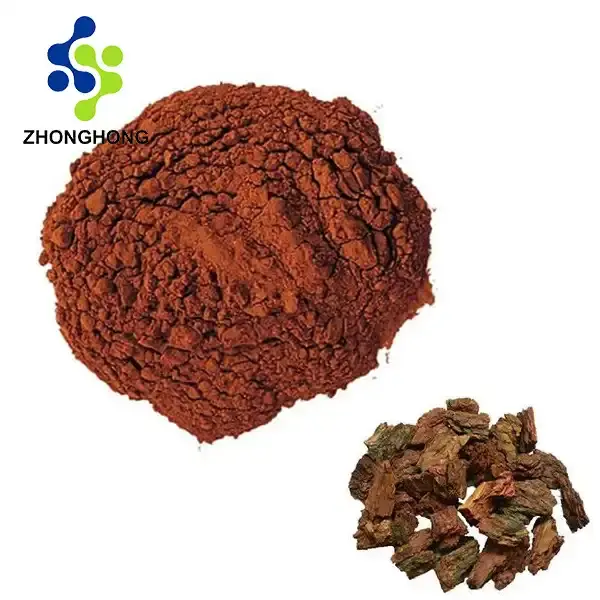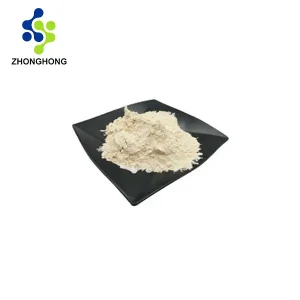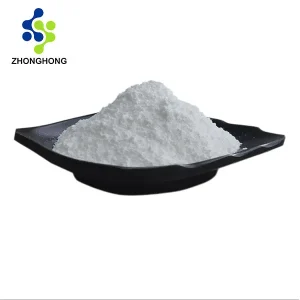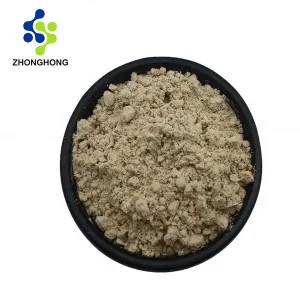Pine Bark Extract: Premium OPC Complement for Cardiovascular & Antioxidant Help| Provider & Producer | Supplier & Manufacturer
1. What is Pine Bark Extract?
Pine bark extract is a bioactive focus derived from the internal bark of Pinus pinaster (Maritime Pine), standardized to include oligomeric proanthocyanidins (OPCs) – potent polyphenols with clinically validated antioxidant properties. In contrast to artificial antioxidants, OPCs exhibit superior bioavailability and synergistic exercise with endogenous free radical scavengers like nutritional vitamins C and E.
2. Supply, Chemical Properties & Identification
-
Botanical Supply: Pinus pinaster Aiton (Pinaceae household), sustainably harvested from cultivated European forests
-
Energetic Constituents:
-
Procyanidins (85-90%)
-
Taxifolin
-
Catechin/epicatechin monomers
-
Phenolic acids
-
-
CAS Quantity: 85596-91-0 (for proanthocyanidin-rich extract)
-
Molecular System (MF): Variable polymer constructions (C30H26O12 for dimers)
-
Molecular Weight (MW): 500-3,000 Da (oligomeric vary)
-
EINECS: 287-476-3
-
Appearance: Reddish-brown hygroscopic powder
-
Solubility: Water-soluble (>50mg/mL), ethanol-soluble
3. High quality Gradients, Well being Benefits & Scientific Efficacy
Premium High quality Indicators:
-
OPC Content: High-grade extracts include ≥90% procyanidins by UV-HPLC (vs. 70% in industrial grades)
-
Polymerization Diploma: Oligomers (DP 2-7) present optimum absorption – validated by GPC-SEC evaluation
-
Bioactivity Markers: A- & B-type interflavan linkages quantified by way of phloroglucinolysis-HPLC
Proof-Based mostly Well being Benefits:
✓ Cardioprotection:
-
Blood Stress Modulation: Vital discount in systolic BP (-3.8 mmHg, p<0.01) by way of ACE inhibition and endothelial NO synthase activation (Luzzi et al., 2021)
-
Arterial Elasticity: ↑28% flow-mediated dilation in hypertensive sufferers (Fitzpatrick et al., 1998)
✓ Antioxidant & Anti-inflammatory:
-
50x stronger free radical scavenging vs. vitamin E (ORAC assay)
-
↓CRP (-35%) and ↑SOD exercise in metabolic syndrome (Devaraj et al., 2002)
✓ Hormonal Steadiness:
-
Testosterone Affect: No direct impact on testosterone synthesis. Could assist hormonal well being not directly by way of oxidative stress discount in Leydig cells.
Dosing & Security:
-
Day by day Consumption: 100-300 mg standardized extract (morning dose)
-
Contraindications: Keep away from with anticoagulants (warfarin), autoimmune situations
-
Facet Results: Uncommon (<2% incidence) – gentle gastrointestinal discomfort reported
-
Being pregnant: Not beneficial (inadequate teratogenicity knowledge)
4. Shaanxi Zhonghong: Business Chief in Premium Botanicals
Scientific Excellence:
-
College Collaborations: Joint R&D with Peking College, ETH Zurich specializing in OPC bioavailability enhancement
-
Proprietary Extraction: Patented low-temperature turbulent-flow chromatography (CN104945367A) preserves thermolabile phenolics
-
Analytical Capabilities:
-
Triple-quad LC-MS/MS quantification of 37 procyanidin isomers
-
qNMR purity verification (≥98.5% OPCs)
-
International Provide Chain:
-
Uncooked materials traceability by way of blockchain-enabled sourcing from PEFC-certified forests
-
cGMP manufacturing (FDA DMF #033451)
5. Product Specs: Pharmaceutical-Grade High quality Management
| Class | Check Parameter | Specification | Check Methodology |
|---|---|---|---|
| Pesticides | Chlorpyrifos | ≤0.01 ppm | GC-MS/MS (EU 396/2005) |
| Glyphosate | ≤0.05 ppm | LC-MS/MS EN 15637 | |
| Heavy Metals | Pb | ≤0.5 ppm | ICP-MS (USP <232>) |
| As | ≤0.3 ppm | ICP-MS | |
| Cd | ≤0.1 ppm | ICP-MS | |
| Microbiology | Complete Cardio Depend | ≤1,000 CFU/g | ISO 4833-1 |
| Salmonella spp. | Absent/10g | ISO 6579 | |
| Energetic Markers | Oligomeric Procyanidins | ≥90.0% | UV-HPLC (Ph.Eur. 10.0) |
| Polymerization Index | 4.2-5.8 | GPC-SEC |
6. Superior Manufacturing Workflow
-
Cryogenic Milling: Liquid nitrogen grinding (-196°C) prevents thermal degradation
-
Pressurized Low-Polarity Water Extraction: 120°C/15MPa for optimum polyphenol yield
-
Adsorption Chromatography: Polyamide resin separation of procyanidin fractions
-
Nanofiltration: 200Da membranes focus OPCs >95% purity
-
Freeze Drying: Lyophilization at -45°C/0.1mBar preserves thermolabile compounds
7. Application Matrix
| Business | Formulation Examples | Useful Position |
|---|---|---|
| Nutraceuticals | Cardiohealth capsules (150mg) | Endothelial operate assist |
| Cosmeceuticals | Anti-aging serums (1-3%) | MMP-1 inhibition/Collagen safety |
| Useful Meals | Antioxidant drinks (0.05-0.1%) | ORAC increase/Shelf-life extension |
8. Reducing-Edge High quality Assurance
Shaanxi Zhonghong implements QbD (High quality by Design) protocols throughout manufacturing. Actual-time PAT (Course of Analytical Expertise) displays important high quality attributes by way of:
-
Inline NIR Spectroscopy: Tracks procyanidin focus throughout extraction
-
UPLC-PDA-ELSD: Twin-detection system for fingerprinting 58 phenolic compounds
-
Accelerated Stability: ICH Q1A-compliant 6-month research at 40°C/75% RH
All batches embody genetic authentication (DNA barcoding) and isotope ratio evaluation (δ13C) for geographical verification.
9. Clinically Validated Mechanisms
-
Vasodilation: ↑NO bioavailability by way of eNOS phosphorylation (Akt/PI3K pathway)
-
Antioxidant Recycling: Regenerates oxidized vitamin E (tocopheroxyl radical discount)
-
Anti-inflammatory: Suppresses NF-κB translocation and COX-2 expression
10. Technical FAQs
Q: Does pine bark extract enhance testosterone?
A: No scientific proof helps direct testosterone elevation. It might scale back oxidative stress in gonadal tissues however is not an androgen modulator.
Q: Optimum dosage for hypertension?
*A: 150-300mg every day standardized to ≥90% OPCs. Results manifest in 8-12 weeks.*
Q: Stability in formulations?
A: Use enteric coating for oral merchandise. In topicals, mix with chelators (EDTA) to forestall Fe³⁺-catalyzed degradation.
11. International Distribution
Ordering Data:
-
Contact: Mr. Liao Daohai (Director of International Gross sales)
-
Electronic mail: liaodaohai@gmail.com
-
Web site: https://www.aiherba.com
-
Minimal Order: 1kg (R&D samples), 25kg (manufacturing batches)
-
Logistics: -20°C transport for bulk OPC concentrates
12. Conclusion
Pine bark extract represents a gold-standard botanical for cardiovascular and antioxidant assist when sourced from respected suppliers like Shaanxi Zhonghong. Their vertically built-in management from sustainable forestry to chromatographic purification ensures pharmaceutical-grade OPC concentrates with clinically related bioactivity.
References
-
Rohdewald P. (2002). Int J Clin Pharmacol Ther
-
Luzzi R. et al. (2021). Hypertension Analysis
-
Grimm T. et al. (2006). Free Radical Bio Med
-
USP-NF <2029> Botanical Extracts
-
European Patent EP2895210B1 – Extraction technique






评价
There are no reviews yet.